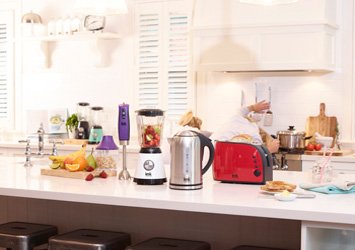Top 5 Brilliant Hacks to Kickstart Your Vegetable Garden
As you might imagine, I grew up with more than a few adults greeting me with, “Mary, Mary, quite contrary, how does your garden grow?” followed by a big smile or, more often, laughter. It was embarrassing, but probably not for the reason you assume. I didn’t know how to answer that question! I didn’t know what “contrary” meant, I didn’t have a garden, and I worried I was supposed to.
I did know to respect adults and speak politely when spoken to. But no one ever told me the right answer to the question I heard over and over again.
Today, I have good news and the best response: My seeds have germinated, sprouts are growing to seedlings, outdoor hardening has begun, and I anticipate full planting within weeks. Things are looking good for a successful harvest starting mid-summer.
Growing a garden that pumps out tasty vegetables doesn’t have to cost a fortune. There are many simple ways to have a lush, bountiful garden without emptying your wallet. Whether it’s recycling stuff, mixing up your own soil boosters or scoring cheap seeds and starter plants, I’ve got you covered with a few of my best gardening hacks, tips and tricks to save cash while honing your gardening skills.
BORROW AND SHARE TOOLS
If you’re new to gardening, rather than pouring money into a bunch of gardening tools you’re not sure you’ll ever use again, let friends and neighbors know what you’re up to. Chances are good they’ll have items you can borrow. And don’t be surprised if you receive a few gifts of tools others want to get rid of. It’s worth a shot and will keep your costs down to the bare minimum as you set out to see if gardening is an activity you enjoy and find success in. With some experience under your belt, you’ll be better positioned to decide the tools you need to own. And when that time comes? Shop garage sales, thrift stores and Facebook Marketplace.
FORGET SEEDLINGS
It’s tempting! Those pony packs and endless trays of seedling “starts” in the garden center are all planted, sprouted, thriving, adorable and ready to hit the ground. You could have your garden planted before dinner. And you’ll pay dearly if you choose to go that route. They’re not cheap! What’s better? DIY.
SEED-STARTING
It’s easy to grow your own starter seedlings. Walk away from the pony packs and head to the rack of seed packets. Look at all the choices. You’ll have to wait a bit to get your garden thriving, but I can tell you that nurturing plants from germination to maturity is such a rewarding experience. It allows you to witness the entire growth process firsthand.
Make sure you read the necessary information on the back of the seed packets. Don’t know your zone? Check this color-coded plant hardiness zone map of the United States at www.brecks.com/zone_finder to find which hardiness zone you live in. At that site, you’ll be able to type in your ZIP code to find your exact zone.
You will need some seed-starting soil, but that’s all — don’t buy starting kits or special containers. Get creative with what you have at home. Egg cartons, toilet paper rolls, yogurt cups, paper coffee cups and fast-food containers can be repurposed into seed-starting containers. Just be sure to poke drainage holes in the bottom, then fill the containers with the soil.
GREENHOUSE FROM THE SALAD BAR
The next time you enjoy a salad bar lunch, don’t toss out the plastic clamshell container! Instead, give it a second life as a mini-greenhouse for spring seed-starting. After cleaning the container, add airflow by punching small holes in the top with the tip of scissors, a knife or an awl and hammer.
Fill the bottom half with potting mix or your preferred seed-starting soil, then plant your seeds according to seed packet instructions. Water lightly, close the lid, and place in a sunny spot. Watch as your seeds sprout in this cool little greenhouse, which traps warmth and moisture while letting in sunlight.
MOVING SEEDLINGS OUTDOORS
After the last frost in your area (garden.org/apps/frost-dates/) and two weeks before outdoor planting, gradually introduce your seedlings to weather conditions in their future garden home. Begin by placing them outside for a few hours in the afternoon shade, shielded from wind. Return them indoors before nighttime temperatures decrease.
Each day, extend their outdoor visit gradually and expose them to increasing amounts of direct sunlight. By the end of the two weeks, unless freezing temperatures are expected, the seedlings can remain outdoors in a sunny location until you’re prepared to transplant them into the garden.
Known as “hardening,” this process removes the shock of climate change for these baby seedlings by introducing their eventual climate conditions gradually. This gives plants the best chance for maturity and your successful harvest.
MORE GARDENING HACKS
You can find 18 more of my favorite gardening hacks, tips and tricks at EverydayCheapskate.com/gardenhacks. Come visit; we can share stories!




